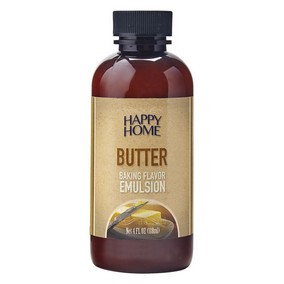

#Milk emulsion butter series
From 1877, US states including New York, New Hampshire and Wisconsin passed a series of laws banning margarine from being dyed yellow to resemble butter – and in some areas margarine even had to be dyed bright pink before it could go on sale. They asked their politicians to stop the ‘demon spread’ from ruining their livelihoods. In the US, dairy farmers almost immediately became worried people would stop buying their butter when margarine became available. Today, the two rival spreads are available in virtually every supermarket in the world, but it hasn’t always been the case. The problem is that saturated fats aren’t as healthy for us as unsaturated fats, so it is a balancing act to break the right number of double bonds. Manufacturers therefore use a process called hydrogenation – passing hydrogen gas through the oil in the presence of a nickel catalyst – to break some of the double bonds, saturating the chains with hydrogen and increasing the melting point. Fatty acids with more carbon–carbon double bonds typically have a lower melting point. Vegetable oils are liquids at room temperature, so manufacturers alter the fatty acids that form its triglycerides to turn it into a solid. Modern margarine’s production requires a little more chemistry. They asked their politicians to stop the ‘demon spread’ from ruining their livelihoods Producers separate the fat and the water in cream, then churn it, which physically destroys the lipoprotein barrier between the fats and allows the droplets to clump together. The result is yellow, tasty butter ready to use in cooking, baking or as a spread. Each globule of butterfat is surrounded by a lipoprotein membrane. Turning milk into butter is all about breaking down the chemical forces that trap the butterfat in place. So, manufacturers in the UK often use centrifugation to separate butter’s components at high speed and remove a portion of the butterfat before sale. Butterfat provides fantastic nutrients, but is calorific. These fats are mostly composed of triglycerides: long chains of different fatty acids – all containing carboxylic acids – in groups of three. Milk is an emulsion of water, sugars and microglobules of butterfat. It’s made from milk and usually comes from cows. But the science and the history of these two spreads are far more complicated. But it hasn’t always been …īutter and margarine are both solidified emulsions of fats in water butter is produced from milk, and margarine is produced from vegetable oil. I fear that if it went directly into the butter that there would be enough liquid to make the emulsification difficult.Margarine is a commonplace, yellow spread. If your milk is cold then you shouldn't have a problem with curdling and should be able to mix the vodka directly in with the milk. I would mix a small amount of lecithin into the milk and whisk it quickly as you drizzle in the butter.Īs for the vodka- I don't use alcohol and can't predict how it will behave.

Look at mayonnaise recipes for examples of this technique though, of course, you don't want as much air worked into your dish. The emulsifier will grab the particles of fat and keep them from coalescing and so keep them in solution. The idea with any emulsion is to blend emulsifiers into the liquid and then slowly add the fat. Butter has some emulsifiers in it but I don't think it will be up to this task on its own. What you want, therefore, is to create an emulsion. To keep the relatively large milk fat globules in cow's milk from coalescing, the milk is forced under some pressure through a very small aperture that atomizes the fat and keeps it in solution.Īlthough it seems like this might work with butter I doubt very much that this is a worthwhile solution (pun intended). Homogenization has a fairly specific meaning in dairy.


 0 kommentar(er)
0 kommentar(er)
